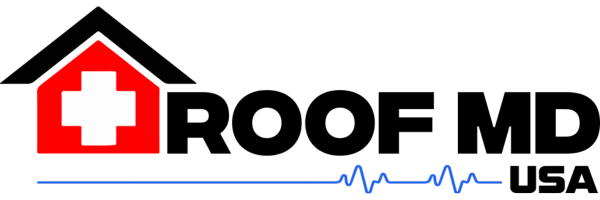Living in a tornado-prone area requires more than just an emergency plan. Your home, particularly the roof, is one of the first lines of defense against these violent storms. In this guide, we’ll explore effective strategies to fortify your roof against the destructive forces of tornadoes, ensuring your safety and peace of mind.
1. Understanding Tornado Forces
Tornadoes bring extreme winds that can rip a roof apart in seconds. Understanding the intense forces at play helps in planning effective reinforcement strategies. When a tornado hits, the sudden pressure changes and violent, swirling winds exert tremendous forces on your home. Knowledge of these dynamics points us toward practical solutions, such as enhancing wind resistance and ensuring your roof can handle rapid updrafts.
The unpredictability of tornado paths only adds to the urgency. You can’t always predict when or if a tornado will affect your area, but understanding the mechanics behind these natural phenomena allows you to prepare strategically. Learning about pressure zones and stress points helps in identifying which sections of your roof need urgent attention, ensuring you’re not caught off guard.
2. Importance of Roof Inspection
Regular roof inspections can identify vulnerabilities or existing damage, allowing you to address issues before they become serious pitfalls during a tornado. Catching problems early is essential, and engaging a professional roofer ensures an experienced eye scans every inch of your roof. From spotting unnoticeable leaks to confirming the integrity of roof supports, it’s all about curbing problems before they’re exacerbated by a storm’s fury.
Inspection isn’t purely about spotting damage but also about evaluating the roof’s longevity. The age of your roof can signal different kinds of risks. Aged roofs may have brittle shingles or compromised underlayment, making tornado resilience a top priority. The inspection process could pave the way for enhancements like installing impact-resistant shingles or upgrading to a metal roof, which can fend off wind damage more effectively.
3. Choosing Impact-Resistant Materials
Opt for roofing materials designed to withstand heavy impacts and high winds, significantly increasing your roof’s durability against tornado threats. Materials like metal and specialty shingles are crafted to endure the kind of punishing conditions brought by severe weather. While metal roofs are superb for long-term resilience, high-quality shingles made for storm resistance can offer more budget-friendly solutions without compromising on protection.
The importance of quality material cannot be overstated. Think of it as an investment in peace of mind. Besides the immediate benefits of protection, high-grade shingles or metal roofs can also enhance your home’s value, providing returns both in safety and financial terms. By prioritizing durability, you not only shield your home but also effectively lower potential repair costs after a tornado.
4. Securing Roof Decking
Properly securing the roof decking can prevent wind uplift, keeping your roof intact even during intense storms. The decking forms the backbone of your roof, and ensuring its robustness is crucial. When wind lifts poorly secured decking, it leaves your home exposed to elements, increasing internal damage risk.
Decking security starts with the choice of secure fasteners and installation practices. Expert guidance can assure that the joints and connections are fortified properly. Additional steps like using glue-not fashion fasteners, and strapping techniques can further ensure that the decking resists the primal forces of a tornado. This simple yet effective strategy significantly elevates the storm-readiness of your roof.
5. Reinforcing Roof-to-Wall Connections
Strengthening the connection between the roof and walls helps distribute wind forces evenly, reducing the chance of structural failure. These connections are crucial weak points during a storm. By implementing reinforcements like metal ties and brackets, you ensure that the joining of roof and wall doesn’t come undone under pressure.
Experienced contractors should handle such reinforcements to guarantee optimal strength and reliability. As each home has its unique design, tailored solutions maintain the integrity of these critical junctions, offering peace of mind that your roof won’t detach during challenging weather.
6. Utilizing Roof Bracing
Adding extra bracing can provide additional support to your roof structure, making it more resilient during high winds. Roof braces act like bones for your roof, offering extra layers of resistance. When installed correctly, they provide stiffness and stabilization, ombatting the intense wind pressure.
Bracing doesn’t just support surface structures but also prevents further collapse. Effective bracing will cushion all parts of your roof, optimal coverage against both external winds and internal pressure changes.
7. Investing in a Secondary Water Barrier
A secondary water barrier can protect your home from water intrusion when roofing materials are compromised, further safeguarding the interior of your home. During a tornado, primary defenses might fail, allowing pervasive water fault through small points of entry unless these measures are applied.
Water barriers are crafted from sturdy synthetic materials, serving as layers locked beneath the surface. By preventing residual dripping, these barriers guard ceilings, walls and costly paintings from damaging substances like mold and rust. Prep work with secondary barriers is an invisible force, keeping collections safe in face of severe setbacks.
8. Installing Hurricane Ties
These metal connectors help secure your roof to the home’s frame, minimizing the likelihood of it being lifted off during a tornado. Working in tandem with roof bracing and wall fortifications, hurricane ties stitch together critical aspects of your structural geometry.
In areas detained by high winds, investments in hurricane ties stand paramount. Installation by professionals handles optimum tension, enabling relationships between roof and wall sections to resist forces that would tear others apart. It’s the fine detailing that grants robust defensive posture during peak tornado season, essential for life continuity around family spaces.
9. Regular Roof Maintenance
Keeping your roof in top condition with regular maintenance ensures it can withstand the pressures of a tornado. The ultimate consequence of storm damage often traces back to neglect, allowing minor frailties to develop. Regular maintenance works like an ongoing insurance policy, keeping your property ready when the weather changes dramatically.
Routine tasks like gutter cleaning, shingle replacements, and sealing minor leaks ensure the longer viability of your roof. They also herald the opportunity to make calculated improvements when necessary. Investing time in appearance and function is never wasted effort—preventative care heightens your home’s value, not just monetarily but in emotional security during inclement changes.
10. Consulting with Roofing Experts
Professional advice and services can offer tailored solutions and improvements specific to your home, maximizing your roof’s protective capabilities. The intricate nature of roofing means not every general solution is the optimal fit for your living quarters. Individualized assessments pave the way for bespoke measures geared for both heritage and novelty residential properties.
Experts provide perspectives often overlooked by homeowners, as well as solutions spanning materials, structurals, and new tech integration. Their insights offer judicious analysis, ensuring that your roof isn’t merely another surface, but unheard frontline protection. The investment ensures stormy seasons are approached with the deserving consideration they demand.
11. Protecting Vulnerable Areas
Identify and fortify weak spots such as chimneys, vents, and skylights to ensure they do not compromise your roof’s integrity during a storm. Tar-sealed edges, cracked surfaces, and older connectors translate into vulnerabilities when gusts sweep across rooftops.
Each weak point requires potential reassessment and specific support assemblies as per your home’s typological setup. Align the reinforcements parallel to extensive monitoring checks — results from periodic repairs preserve harmony between favorable aesthetics and weather resilience, handling nature’s trials in perfectly architecturally manner.
12. Considering Roof Shape and Design
Selecting a design and shape that can naturally resist high winds can be a proactive strategy in new builds or remodels. A conical or dome-shaped roof disperses wind pressure better than traditional designs. Steeper pitches may also lessen wind load on surfaces, sending harsher blows overhead without causing disturbance.
Structural reimagining isn’t feasible for every property owner, yet exploring these options when entering new ventures is wise. Undertake informed decisions through collaboration alongside experts, harvesting modernity with sophistication centered around tornado counter-resilience even amidst challenging projections.


